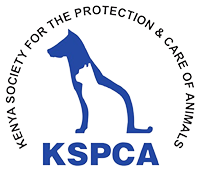Grooming and brushing your pet’s hair is not merely to make them look nice, it serves an important health benefit by keeping the hair and underlying skin in good condition. An animal’s skin is a big part of its defence mechanism against diseases and an important indicator of overall health. Although long-haired dogs and cats require more frequent coat care, even short-haired animals need some form of regular brushing and grooming. It is good to establish a brushing routine from a very early age, keeping the sessions short and rewarding them afterwards. The amount of grooming depends on the animal’s breed and hair type.
Some of the benefits of brushing and grooming include:
- While you are brushing, you have a good opportunity to inspect your pet’s skin for lumps, wounds, or other tender spots and abnormalities that would not easily be visible otherwise
- Greasy, unkempt hair will block pores and cause skin irritation and a smelly secretion
- Brushing will give you time alone with your dog to deepen your bond and show your affection
- The natural oils produced by the skin will be evenly distributed by brushing, helping keep the skin and hair healthy and shiny
- Grooming your pet regularly controls excessive shedding, so your house will be cleaner
- Brushing will remove old, excessive hair that can make the coat heavy and make the animal feel hotter
- Brushing will help remove dirt and prevent tangles and hair mats
- Brushing can help with pet-related allergies
- Grooming is a good time to check for parasites such as fleas and mites to catch them early before they damage the skin
- Hair mats, if formed, will pull on the skin and cause painful sores on the skin. These sores will easily get infected especially if they are hidden under hair mats
Shaving hair mats safely
With diligent brushing and hair care, your pet should never have hair mats, but if they do occur, here are some steps to follow.
Scissors should never be used to remove hair mats. Hair mats mostly occur very close to the skin and attempting to remove them with scissors can easily lead to wounds made by accidentally cutting the skin. Scissors should only be used to (very carefully!) remove hair tangles that hang further away from the body. If your pet has large hair mats or many of them, it might be best to consider a professional groomer to initially remove the hair mats – further maintenance can then be continued at home. Grooming clippers are needed to remove any but the smallest of hair tangles. Hair mats can be very painful or cause your pet to show resentment to their removal in which case sedation may be necessary. If your pet becomes very agitated, trying to remove hair mats without professional help may lead to a risk of you being bitten or scratched, or your pet being injured or traumatized in the process
- Only clip dry hair, never right after bathing.
- Only clip small areas at a time, clippers will become painfully hot if used for a longer period.
- Secure your pet adequately, either with a leash or with another person helping. Do not proceed if your pet becomes aggressive.
- Start with the most difficult ones (that your pet would struggle to reach themselves) such as the mats along the spine, afterwards proceeding towards the feet
- Hold the flat part of the blade parallel to the skin
- Clip the mats in the same direction as the hair grows, this minimises the risk of injuring the skin
- Work slowly, aiming the tip of the blade in between the skin and the hair mat without pulling the mat upwards as this might lift the skin and risk nicking it. Only elevate the edge of the mat slightly for you to see where you are aiming
- Extensive hair matting can cause the skin underneath to suffer, so contact your veterinarian if you discover any skin lesions.
Article by: Dr. Laura Wessman
KSPCA Volunteer
Author: admin
NAIROBI CONTACTS
- P.O. Box 24203 -00502 Nairobi, Kenya
- Office +254 733 571 125
- info@kspca.or.ke
- Mon to Sat: 9am – 5pm
SUBSCRIBE
Subscribe To Our Newsletter.
- Copyright © 2023 KSPCA. All rights reserved
- casereport@kspca.or.ke
- info@kspca.or.ke
- events@kspca.or.ke

Leave a Reply